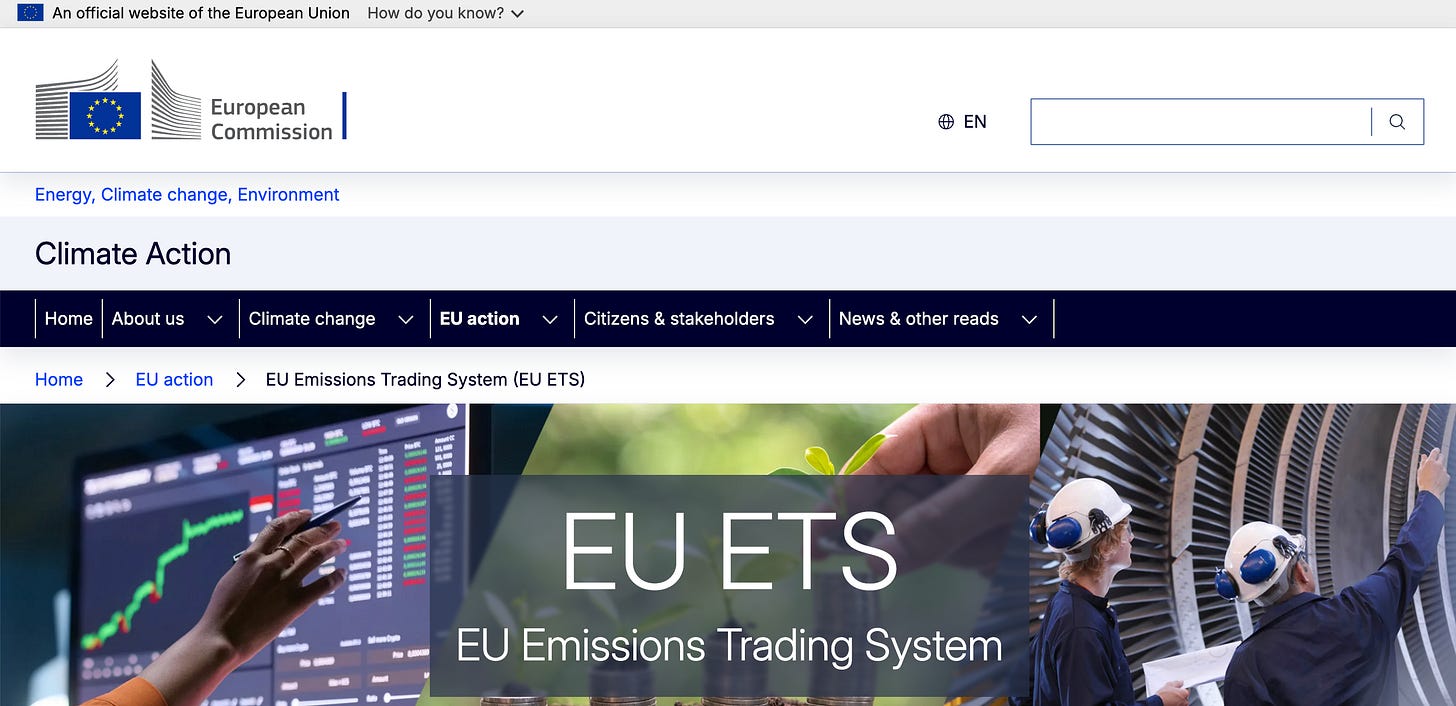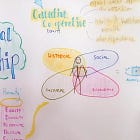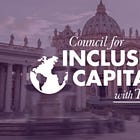The 2020 Convergence
From 1968 Launch to 2020 Activation
In Trisectoral Networks, we discussed how Wolfgang Reinicke's model creates the democratic illusion — government, business, and civil society appearing to collaborate while actual coordination happens elsewhere.
In The Black Box, we discussed how this coordination occurs through hidden clearing houses that process information, capital, and authority flows behind the scenes.
But there's a deeper layer: the private template that builds these systems decades before the public even knows they exist. This isn't about individual conspiracies — it's about a replicable institutional technology that's been refined over centuries and deployed across domains — with laser precision.
In the recent post on the five steps, we discussed
Present the Moral Value
Frame It as a Crisis
Introduce the ‘Indicator’ Metrics
Grant ‘Expert’ Powers to Manage
Pathologise Dissent
These represent the ‘public’ steps, the ones you observe upon close inspection. These are, in essence, expressly what ‘The Black Box’ operationalises, ‘Trisectoral Networks’ use to build the technocratic infrastructure — one, repeatedly put to use over decades, as ‘Dialectics by Design’ argues. However, as Hilary Clinton would have you kznow, for every public statement (or position) there is a private one1.
It’s a remarkable thing to put in writing, really, because what she essentially tells you is that you cannot trust her.
The Hidden Engine: The Private Template
While the public sees moral appeals, crisis response, and expert panels in that order, the real work happens in a different sequence entirely:
Build the Expert Panel (The Hidden Hub)
Establish the centralised clearing-house of insiders — banks, scientific committees, policy think-tanks, agencies — positioned years before anyone knows coordination is needed.Create the Metrics & Indicators (The Technical Tools)
Bake in the ‘scientific’ measurement systems — credit models, carbon accounting, biodiversity indices, risk calculators — that make subjective control appear objective and inevitable.Frame the Moral Narrative (Seeding the Public Values)
Plant the values-driven cause in public consciousness — ‘climate justice’, ‘public health as a right’, ‘equity’ — creating the emotional foundation for later acceptance.Declare the Crisis (Flipping the Switch)
Activate when conditions permit — market crash, pandemic surge, biodiversity collapse — so the pre-built machinery can deploy instantly.Lock In Compliance (Pathologisation of Dissent)
Tie careers, capital, and reputation to the new system; brand resistance as ‘denial’, ‘misinformation’, or ‘extremism’.
This private sequence operates years ahead of public awareness, creating the infrastructure that makes trisectoral networks possible and black box coordination inevitable. And a semi-recent example of just that includes the two UNCTAD ‘Combating Global Warming’ documents from 1992 and 1994, which outline the carbon emission/ecosystem service trading system, incidentally developed by Michael Grubb of the RIIA in the late 1980s.
The 1968 Launch: Systems Thinking
The watershed moment came in 1968, when this private template was systematically deployed across multiple domains simultaneously. This wasn't organic environmental awakening — it was the coordinated launch of control technology.
The Foundation Year: 1968
UNESCO Biosphere Conference2 (September 1968)
Step 1: Created the ‘Man and the Biosphere’ expert network
Step 2: Established ‘biosphere reserves’ as measurement/management framework
Step 3: Introduced environmental stewardship as moral imperative
Club of Rome Formation3 (1968)
Step 1: Assembled Aurelio Peccei (Fiat), Alexander King (OECD), and systems thinking experts
Step 2: Developed computer modeling for ‘global problematique’
Step 3: Framed interconnected global crises requiring expert coordination
Cultural Revolution4 (1968)
Step 3: Questioning of traditional authority created opening for expert governance
Step 3: Environmental consciousness emergence provided moral foundation
The Infrastructure Rollout: 1968-2020
From this foundation, the private template was systematically deployed across every major domain:
Domain 1: Climate Change
Step 1 (1988): IPCC established as expert clearing house5
Step 2 (1990s-2000s): Carbon accounting6, emissions trading7, climate modeling frameworks8
Step 3 (2006-2019): ‘Climate justice’ narrative9, moral urgency building10
Step 4 (2019): ‘Climate emergency’ declarations11, Greta Thunberg activation12
Step 5 (2020+): ESG compliance13, ‘denier’ pathologisation14
Timeline Gap: 20+ years of infrastructure
→ 2019 moral urgency
→ 2020 economic lock-in
Domain 2: COVID-19/Health Security
Step 1 (2005-2019): WHO networks15, Johns Hopkins Center16, pandemic preparedness infrastructure1718
Step 2 (2004-2019): mRNA platforms19, Emergency Use pathways20, contact tracing systems21
Step 3 (2019-2020): ‘Public health as human right’22, collective responsibility23
Step 4 (March 2020): Pandemic declaration24, lockdown deployment25
Step 5 (2020+): ‘Anti-vaxxer’26, ‘misinformation’ pathologisation27
Timeline Gap: 30+ years of infrastructure
→ March 2020 activation
→ immediate compliance
Domain 3: ESG Finance
Step 1 (2000-2015): UN Global Compact28, PRI networks29, SASB frameworks30
Step 2 (2006-2019): ESG ratings31, TCFD reporting32, sustainability metrics33
Step 3 (2019): ‘Stakeholder capitalism’34, Business Roundtable moral shift35
Step 4 (2020): Larry Fink's ‘fundamental reshaping’36, Council for Inclusive Capitalism37
Step 5 (2020+): Mandatory ESG reporting38, ‘greenwashing’ accusations39
Timeline Gap: 15+ years of infrastructure
→ 2019-2020 moral imperative
→ economic enforcement
Domain 4: AI Safety/Governance
Step 1 (2000-2022): Future of Humanity Institute40, Partnership on AI41, research centers
Step 2 (2010-2022): AI ethics frameworks42, safety metrics43, alignment research44
Step 3 (2022-2023): ‘AI existential risk’45, ‘AI ethics’ moral framing46
Step 4 (March 2023): ‘AI existential risk’ open letter47, Sam Altman Senate hearings48
Step 5 (2023+): ‘AI safety’ regulation49, ‘AI doomer’ vs ‘AI accelerationist’ pathologisation50
Timeline Gap: 15+ years of infrastructure
→ March 2023 moral urgency
→ regulatory capture
Domain 5: Biodiversity/Planetary Boundaries
Step 1 (1992-2012): Convention on Biological Diversity51, IPBES networks52
Step 2 (2007-2015): Planetary boundaries framework53, natural capital accounting54
Step 3 (2019): ‘Biodiversity crisis’55, ‘sixth mass extinction’ narratives56
Step 4 (2019-2022): IPBES Global Assessment57, COP15 activation58
Step 5 (2020+): Conservation finance mandates59, ‘biodiversity denier’ pathologisation60
Timeline Gap: 20+ years of infrastructure
→ 2019 moral urgency
→ 2020+ economic integration
Domain 6: Digital Identity/CBDCs
Step 1 (2016-2020): ID2020 alliance61, BIS research, Fed digital dollar teams62
Step 2 (2017-2021): CBDC frameworks63, digital identity standards64, KYC integration65
Step 3 (2020-2021): ‘Financial inclusion’66, ‘banking the unbanked’ moral imperatives67
Step 4 (2020-2022): COVID contact tracing68, vaccine passports69, pilot programs
Step 5 (2022+): Privacy concerns70 pathologised as ‘anti-innovation’71, ‘conspiracy theory’72
Timeline Gap: 5+ years of infrastructure
→ 2020-2021 moral imperative
→ pilot deployment
The 2020 Convergence: Simultaneous Activation
What makes 2020 remarkable isn't that the alleged crises occurred, but that the private template infrastructure was simultaneously activated across all domains:
Health: WHO pandemic authority73, emergency powers74, mRNA deployment75
Climate: ‘Build Back Better’76, green recovery77, ESG acceleration78
Finance: Central bank coordination79, ESG mandates80, stakeholder capitalism81
Technology: AI safety urgency82, content moderation83, digital identity8485
Information: ‘Infodemic’ response86, fact-checking87, ‘misinformation’ pathologisation88
This wasn't organic crisis response — it was the coordinated deployment of infrastructure that had been built over decades.
The Meta-Crisis Framework: Planetary Boundaries
The ultimate sophistication came with Johan Rockström's planetary boundaries89 framework (2009), which provides a meta-dialectical tool for simultaneous crisis activation across all domains.
Instead of separate crises, planetary boundaries creates a scientific framework that can declare multiple simultaneous boundary transgressions:
The 9 Boundaries = 9 Control Domains:
Climate Change90 (SDG13: Climate Action91)
→ Carbon markets, energy transitionBiodiversity Loss92 (SDG15: Life on Land93)
→ Conservation finance, nature managementNitrogen/Phosphorus94 (SDG2.4: Sustainable Agriculture95)
→ Agricultural control, food systemsOcean Acidification96 (SDG14: Life Below Water97)
→ Marine governance, fishing restrictionsLand Use Change98 (SDG15.3: Sustainable Land Management99)
→ Spatial planning, development controlFresh water100 (SDG6.5: Integrated Water Resources Management101)
→ Water governance, allocation systemsOzone Depletion102 (Montreal Protocol103)
→ Chemical regulation, industrial policyAtmospheric Aerosols104 (SDG11.6: Clean Air105)
→ Air quality, industrial emissionsChemical Pollution106 (SDG12.4: Safer Chemicals & Waste107)
→ Regulatory frameworks, risk assessment
Current Status (2024): 6 of 9 boundaries ‘transgressed’, cascading effects accelerating, planetary governance as only solution. Of course, that they established that a boundary had been crossed by 2015 without even knowing what said boundary was… well, that you’re not supposed to question108.
Either way, this enables the ‘meta-crisis’ narrative: not just individual crises, but systemic Earth system crisis requiring comprehensive planetary management.
The Illusion of Democratic Response
The genius of this system is that it creates the appearance of democratic crisis response while operating through pre-positioned clearing house infrastructure:
What the Public Sees:
Moral urgency emerges organically
Experts respond to crisis
Democratic institutions adapt
Market solutions develop
Dissent is naturally marginalised
What Actually Happens:
Expert networks were pre-positioned109
‘Indicator’ metrics were pre-built110
Moral narratives were pre-seeded111
Crisis activation was coordinated112
Dissent is systematically pathologised113
The trisectoral networks provide the democratic theater while the black box clearing houses provide the actual coordination.
The Moral Economy: Step 3 Perfected
What I've previously analysed as the ‘moral economy’ is actually Step 3 of the private template — the systematic deployment of moral frameworks to make economic control appear ethically inevitable rather than politically chosen.
The moral economy operates by:
Moral Laundering: Economic policies dressed as ethical imperatives
Values Integration: Market mechanisms embedded with social justice language
Ethical Inevitability: Making alternatives appear not just inefficient but immoral
Examples across domains:
Climate: ‘Climate justice’ makes carbon markets appear morally necessary114
Health: ‘Public health as human right’ makes medical authority appear ethically mandatory115
Finance: ‘Stakeholder capitalism’ makes ESG compliance appear socially responsible116
Technology: ‘AI ethics’ makes algorithmic governance appear morally superior117
The moral economy ensures that Step 3 (moral narrative) isn't just persuasive — it's psychologically and socially mandatory.
Inclusive Capitalism: The Lock-In Mechanism
‘Inclusive capitalism’ represents the perfected form of Step 5 — locking in compliance by making the system appear responsive to social justice concerns while maintaining the same control structures.
As I showed in Inclusive Capitalism, this works by:
Linguistic Capture: Adopting social justice language while maintaining power structures
Participation Theater: Creating the appearance of inclusion while controlling outcomes
Resistance Absorption: Channeling dissent into system-reinforcing activities
The Vatican Partnership (2020)118: The Council for Inclusive Capitalism with the Vatican represents the ultimate synthesis — economic control blessed by moral authority, making resistance appear not just economically dangerous but spiritually evil.
Inclusive capitalism ensures that even ‘progressive’ resistance ends up reinforcing the same clearing house infrastructure — just with more diverse faces and social justice rhetoric.
Game B: The Sophisticated Capture
The most sophisticated development is the emergence of ‘Game B’ — apparently alternative systems thinking that actually serves the same control template.
Daniel Schmachtenberger's work perfectly illustrates this. His ‘metacrisis’ framework directly parallels the planetary boundaries approach:
Complex adaptive systems thinking
Existential risk framing
Civilisational transition necessity
Coordination mechanisms for planetary management
The Game B Methodology:
Step 1: Alternative expert networks (Game B practitioners, complexity scientists, Civilisation Research Institute)
Step 2: Alternative metrics (anti-fragility, complex adaptive systems models, coordination mechanisms)
Step 3: Alternative morality (‘civilisation-level coordination’, ‘species-level thinking’, ‘post-conventional ethics’)
Step 4: Alternative crisis (‘metacrisis’, ‘meaning crisis’, ‘coordination failure’, ‘civilisational transition’)
Step 5: Alternative compliance (‘conscious evolution’, ‘post-conventional thinking’, ‘developmental sophistication’)
The Schmachtenberger Example: Daniel Schmachtenberger's ‘metacrisis’ framework perfectly illustrates this sophisticated capture:
‘We have a crisis of crises—a metacrisis. The environmental crisis, the social crisis, the economic crisis, the political crisis, the technological crisis, the psychological crisis, the spiritual crisis... These are all symptoms of a deeper crisis: our civilisation's inability to coordinate at the level of complexity that our current challenges require.’
This leads directly to the same conclusion as the UN's planetary boundaries framework: the need for comprehensive coordination systems that transcend democratic governance. The language is more sophisticated (‘coordination mechanisms’ instead of ‘global governance’), but the outcome is identical.
The Capture Mechanism: Game B provides the intellectual framework for people who reject traditional authority structures to arrive at the same conclusions — planetary-scale coordination through expert systems.
Game B as Controlled Opposition: Rather than offering genuine alternatives, Game B channels sophisticated dissent into the same clearing house infrastructure — just with more appealing language about ‘conscious evolution’ and ‘post-conventional coordination’.
The most sophisticated minds who reject mainstream narratives end up advocating for the same expert-managed coordination systems, just with different moral frameworks and technical vocabularies.
The Methodological Capture
This explains why ‘doing your own research’ typically leads to the same conclusions — the methodological frameworks ensure that independent investigation reproduces the desired results:
Climate Research: Must use IPCC methodologies, carbon accounting standards, climate models
Health Research: Must use WHO frameworks, epidemiological models, risk assessments
Economic Research: Must use ESG metrics, sustainability accounting, stakeholder models
Technology Research: Must use AI safety frameworks, ethics guidelines, risk assessments
Alternative Research: Must use complexity science, systems thinking, existential risk frameworks
Even ‘Game B’ methodologies — complexity science, systems thinking, anti-fragility — lead to the same conclusions about the need for expert coordination systems. Alternative methodologies are excluded from funding, publication, and professional recognition — or channeled into ‘alternative’ frameworks that serve the same function.
The meta-crisis narrative makes democratic governance appear structurally inadequate, and democratically impossible:
Too Complex: ‘Citizens can't understand planetary boundaries’
Too Technical: ‘Politicians can't grasp systemic interactions’
Too Urgent: ‘Democracy too slow for crisis response’
Too Global: ‘Nations can't coordinate planetary management’
The pre-engineered answer to all of these is very simple: only technocratic coordination through expert clearing houses can manage systemic planetary crisis.
Conclusion: The Perfected Template
The same five-step template has been refined and deployed across centuries leading to today's planetary governance frameworks:
→ Build the hidden hub
→ Create technical necessity
→ Frame moral urgency
→ Activate crisis
→ Lock in compliance
But the 2020 activation revealed something unprecedented: the template's evolution into a comprehensive three-layer system that captures not just compliance but dissent itself.
Layer 1: Direct Compliance (Traditional approach)
Mainstream institutions, conventional experts, standard metrics
Direct moral pressure and economic enforcement
‘Follow the science’, ‘trust the experts’
Layer 2: Moral Economy/Inclusive Capitalism (Sophisticated adaptation)
Social justice language integrated with control mechanisms
Stakeholder capitalism, ESG compliance, diversity metrics
Makes resistance appear not just wrong but socially irresponsible
Layer 3: Game B/Alternative Systems (Ultimate sophistication)
Complexity science, systems thinking, conscious evolution
Metacrisis frameworks, existential risk, civilisational transition
Captures even sophisticated dissent into the same coordination mechanisms
The Progression Through Layers
The system is designed to capture people at different levels of sophistication:
Layer 1 Capture: ‘Climate change is real, trust the IPCC, support carbon markets’
If rejected →
Layer 2 Capture: ‘Climate change disproportionately affects marginalised communities, support climate justice through inclusive capitalism’
If rejected →
Layer 3 Capture: ‘We face a metacrisis requiring civilisational-level coordination beyond conventional frameworks’
All layers lead to the same outcome: Expert-managed coordination systems, just with different moral frameworks and technical vocabularies. But in the event a sophisticated dissenter does intellectually progress through all three layers:
Rejects mainstream climate narrative
→ ‘IPCC is politically captured’Rejects progressive climate justice
→ ‘ESG is corporate greenwashing’Adopts Game B metacrisis framework
→ ‘We need post-conventional coordination mechanisms’
Each rejection appears to lead to greater sophistication, yet the final destination is identical: expert-managed planetary governance systems, unprecedented is its methodological comprehensiveness. Every possible approach — mainstream, progressive, or alternative — leads to the same conclusions:
Mainstream Path: IPCC
→ climate emergency → carbon markets → expert coordinationProgressive Path: Climate justice119
→ inclusive capitalism → stakeholder governance → expert coordinationAlternative Path: Metacrisis
→ complex adaptive systems → civilisational coordination → expert coordination
The system has achieved methodological totalisation — there is no legitimate way to think about complex global challenges that doesn't lead to expert-managed coordination systems.
The Dissent Channeling Mechanism
Traditional control systems suppressed dissent. The perfected template channels dissent:
Mainstream dissent
→ labeled ‘misinformation’, ‘conspiracy theory’, ‘anti-science’Progressive dissent
→ absorbed into inclusive capitalism, stakeholder frameworksSophisticated dissent
→ channeled into Game B, complexity science, metacrisis frameworks
All forms of resistance end up reinforcing the same clearing house infrastructure — just with different moral frameworks and technical languages. Meanwhile, the meta-crisis narrative makes democratic governance appear structurally inadequate across all three layers:
Layer 1: ‘Too complex for public understanding, too technical for political processes’
Layer 2: ‘Too urgent for democratic deliberation, too global for national governance’
Layer 3: ‘Too evolutionary for conventional thinking, too civilisational for current institutions’
Whether you approach from mainstream, progressive, or alternative perspectives, democracy appears inadequate for managing planetary-scale challenges120.
Return to the Source
What this analysis reveals is that all roads lead back to the Sustainable Development Goals. The SDGs aren't just another policy framework — they're the ultimate meta-framework that integrates every approach:
Layer 1 (Mainstream): ‘Follow the science’
→ Planetary boundaries → SDG implementationLayer 2 (Progressive): ‘Climate justice’
→ Inclusive capitalism → SDG implementationLayer 3 (Alternative): ‘Metacrisis’
→ Complex coordination → SDG implementation
The genius of the system is that the SDGs provide the comprehensive umbrella under which all these approaches converge:
Scientific Authority
Planetary boundaries provide the ‘scientific’ justification for SDG targetsMoral Authority
Development goals provide the ‘ethical’ justification for SDG implementationTechnical Authority
Expert coordination provides the ‘practical’ mechanism for SDG achievement
The Closed-Loop System
The SDG-Planetary Boundaries integration creates a methodologically closed system:
Can't address planetary boundaries without implementing SDGs
Can't implement SDGs without respecting planetary boundaries
Both require expert-managed coordination mechanisms
All alternative approaches lead to the same SDG-based solutions
‘Sustainable Development’ becomes the ultimate conceptual framework that makes every other approach appear as mere implementation details of the same comprehensive system. And that goes whether you approach from:
Mainstream climate science → SDG 13 (Climate Action)
Progressive social justice → SDG 10 (Reduced Inequalities)
Alternative systems thinking → SDG 17 (Partnerships for the Goals)
Economic efficiency → SDG 8 (Decent Work and Economic Growth)
Technological innovation → SDG 9 (Industry, Innovation, and Infrastructure)
Every path leads to the same conclusion: expert-managed implementation of the SDG framework as the comprehensive solution to global challenges.
The SDGs represent the ultimate achievement of the private template: a ‘scientific’ and ‘moral’ framework that appears politically neutral while ensuring all possible approaches to global governance lead to the same expert-coordinated outcomes.
The Ultimate Synthesis
The genius of the perfected template is that it creates the appearance of vigorous debate while ensuring all positions lead to the same outcome:
The Debate: Mainstream vs. Progressive vs. Alternative approaches
The Outcome: Expert-managed coordination systems across all domains
The Justification: Scientific necessity (Layer 1), moral imperative (Layer 2), evolutionary inevitability (Layer 3)
This is how you build a technocracy that appears not just democratic but morally and intellectually superior to democracy: by ensuring that every possible way of thinking about problems leads to expert governance solutions.
The Trisectoral Networks provide the democratic facade.
The Black Box clearing houses provide the coordination infrastructure.
A Global Ethic provides the ethical justification.
The Moral Economy provides the economic inevitability.
Inclusive Capitalism provides the progressive legitimacy.
Game B provides the intellectual sophistication.
Agenda 21 provides the stakeholder governance justification.
The Sustainable Development Goals provide the methodological inevitability.
But — though invisible to public view — the private template provides the methodological engine that makes expert governance appear inevitable from every possible perspective.
The 52-year arc from 1968 to 2020 wasn't just the construction of control infrastructure — it was the systematic capture of reason, ensuring that every path of logical thinking leads to the same destination: expert-managed global society.
This is the ultimate sophistication —
Not simply controlling what people think, but controlling how these thoughts should consider alternatives to the current system.































